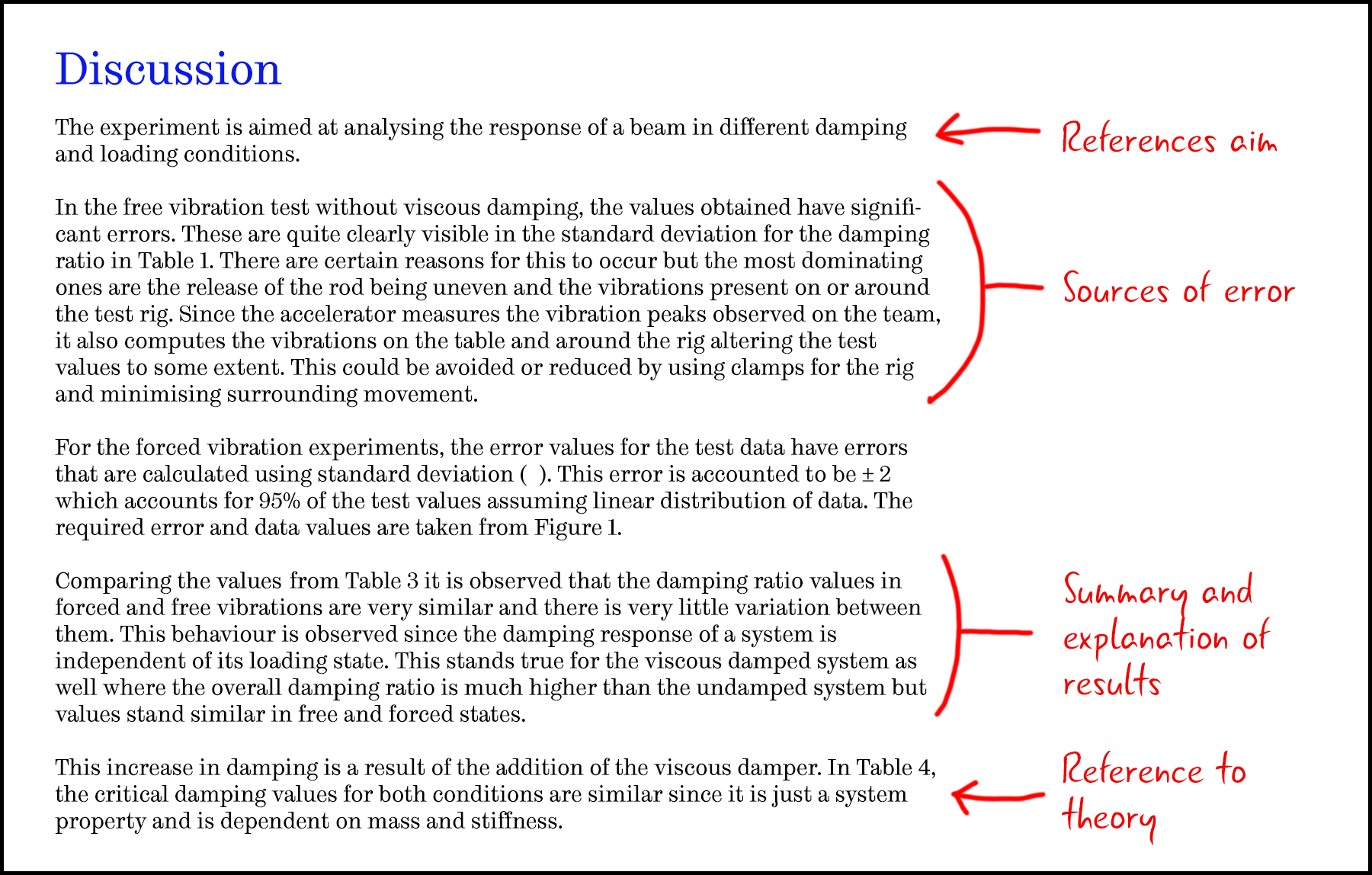
What goes in a discussion?
The discussion is probably the least fixed section of your report. There are no hard and fast rules about what should go in and unlike the method and results, discussions don’t follow a particular format. However, it is important that your discussion has a logical structure and the argument has a clear flow to it. In this article, we'll look at the key details that should go into a discussion section.
The point of a discussion is to explain:
- What your results mean.
- Whether your results answer the questions or aims you set out in the Introduction.
- How your results are relevant to engineering problems.
- Where the sources of error were and how confident you are in your results.
So what needs to be in your discussion?
- The discussion should explicitly reference the aims and objectives and address each one.
- The discussion section should summarise the results. It may seem obvious, but we often see technical reports where the discussions fail to mention the results.
Example 1: Significant differences were found between the two samples (p<0.005). Example 2: The graph suggests a linear relationship between applied force and measured deflection.
This should include a discussion of **possible sources of error** in your results. The larger the errors, or the more variation in a range of results, the less confidence you can have in your results, and the less significance you can attach to them.
We usually talk in terms of “confidence intervals” within which a value is almost certain to lie, and “statistically significant differences” between two or more datasets we’re testing.
Example: I want to compare the mass of two samples, A and B. I take 10 measurements of each using the same method. Across the 10 samples, the average mass of sample A is 50g, and based on the spread of results, I am 95% certain that the real value lies between 45g and 55g. The average mass of B is 52g, and I am 95% certain that the real value lies between 48g and 56g. It is true to say that “the average measured mass of B was higher than A”. However, it would not be a true reflection of the data to say that “the results show that B is heavier than A”, because it is possible that B weighs 48g and A weighs 55g. The results show a difference in the measured values, but not a statistically significant one.
The discussion should attempt to explain the significance of the results in the context of the report, other work within the organisation and/or the wider literature on the topic.
It’s the only section where you can use conjecture (forming opinions based on incomplete information) for example:
- “The results suggest that…”
- “The differences between the two groups may be accounted for by…”
- “Errors may have been introduced by…”
Example: The nitrile gloves performed better than the latex. One possible explanation for this result could be the glove thickness.
But you shouldn’t make guesses without providing supporting evidence.
Your discussion might include comparisons with other work or reference to established theory.
Example: Neither test was able to find any significant difference between latex and nitrile examination gloves in their effect on roughness perception… It might be expected that the higher shear forces experienced with the latex gloves would affect perceived roughness. However, Taylor and Lederman showed, through both a theoretical model and experiments with grooved tiles, that friction is not a significant factor in perceived roughness.
You should not introduce any scientific theories or work (this should be done in the Introduction section) or any new data (this should be in the Results section).
Take a look at this example from an experiment to measure the vibration properties of a beam under different conditions.
The writer has wrongly put all the theory here instead of in the Introduction, where it belongs. They have also failed to refer to their results!
A better example can be found in this excerpt from the same experiment:

So now you hopefully have an idea of what should go into a discussion, and what definitely shouldn’t!